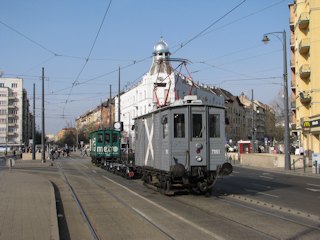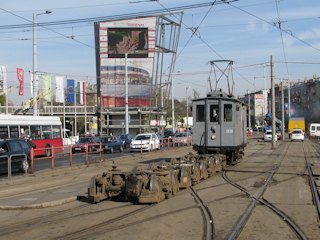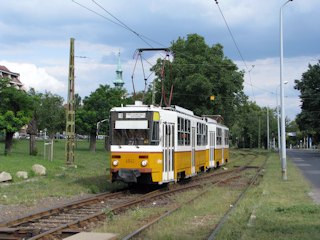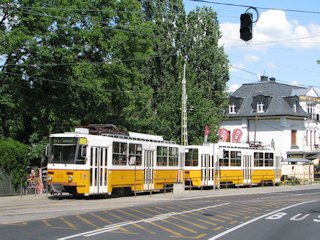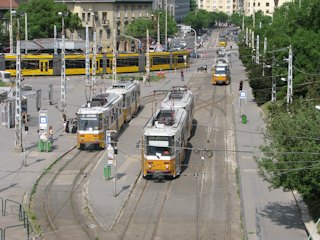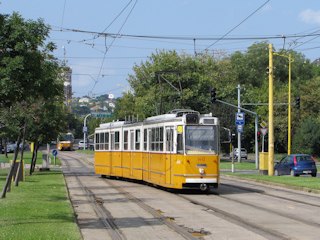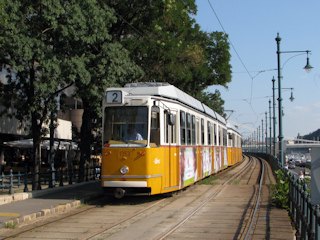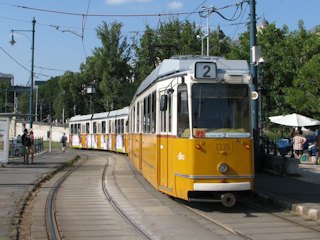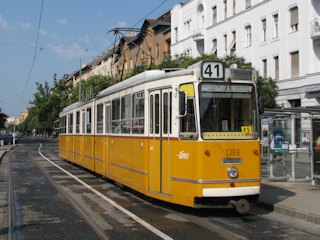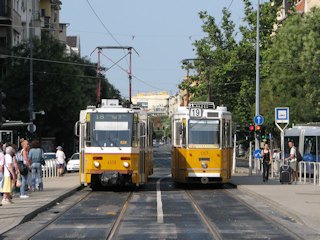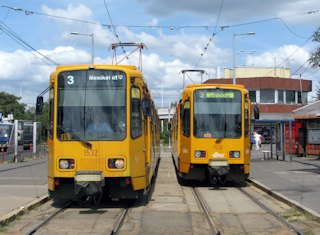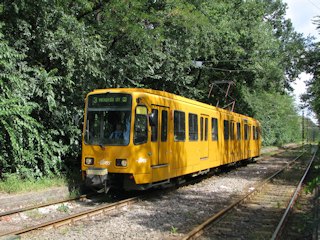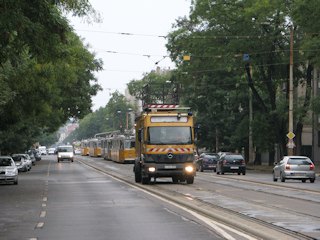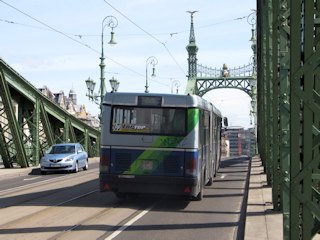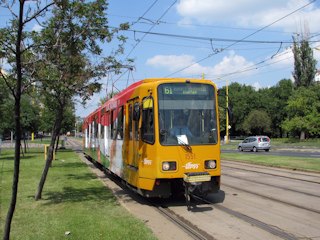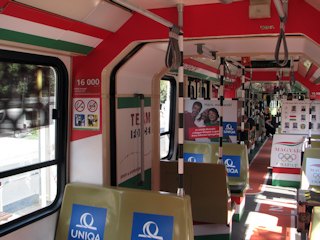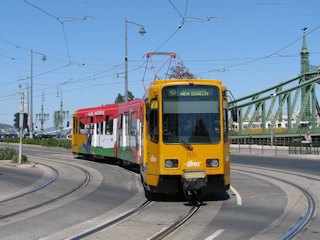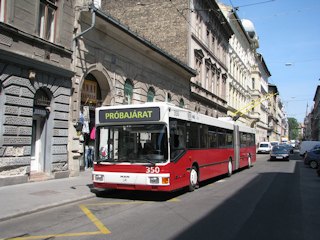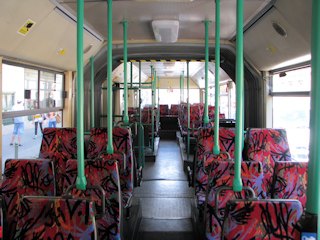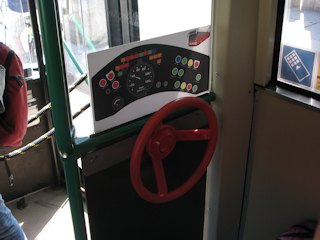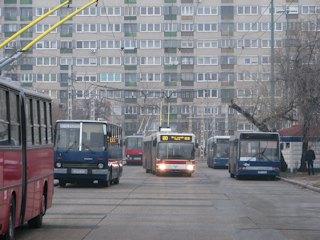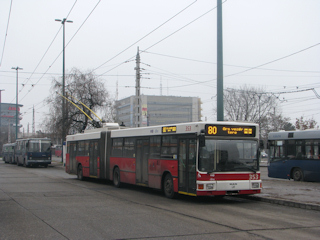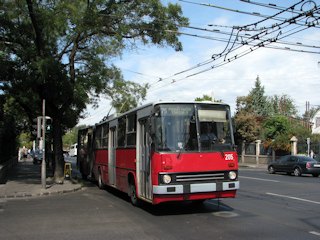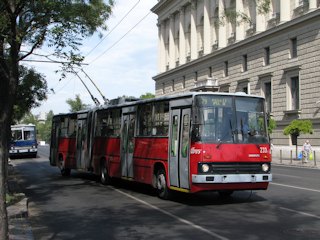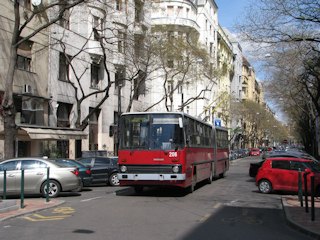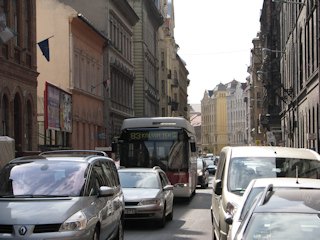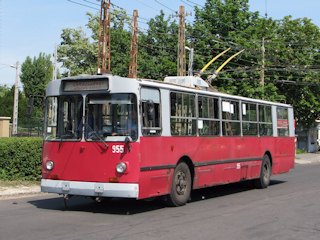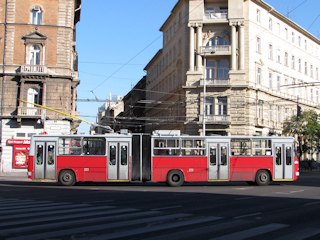Trams of Hungary and much more...
Spring to Winter 2012
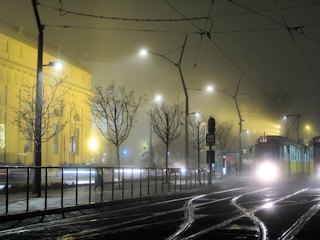
Darkness and light at Deák
Ferenc tér
It's been a while since I last did a diary-like page like this about what has happened on the streets and tracks of Budapest, and I'm not even sure there's a demand for it, but hey, I have seen free time now, so I'll do another one. I hope you'll like it!
Miscellaneous
"Special"
activities
The
Olympic Tram
Trolley
buses: the newcomers
Trolley
buses: the usual bunch
Farewell
to the ZiU-9
Back
to the city
Miscellaneous
II.
New metro trains
All
Souls' Day traffic
Autumn
turns to Winter
125
years of electric trams in Budapest (full report coming later)
A
bit of Grand Boulevard
The
Budapest HÉV has also turned 125
Trolley
buses in lividity
All's
well that ends well
The chapters and this the pictures are not necessarily in chronological order - try to think of this as a feature ;) ;
Two bogie transports, caught accidentally: to the right at Móricz Zsigmond körtér, to the right on the third track of the Puskás Ferenc Stadion stop. It's always nice to see Mukis at work!
Miscellaneous public
transport scenes:
0:04- Muki shunters moving a set of Ganz
CSMG2 trucks around Újbuda-központ
0:35- A similar transport seen near Szent
Gellért tér in the middle of the morning rush-hour
1:04- M.XA double unit of the Csepel HÉV service at the Lágymányosi híd stop (since then renamed
to Közvágóhíd)
1:19- No, this is not the stop "Szabadkikötő",
we just stopped in the middle of the line for some unknown reason, and
the pre-recorded PA announcement was automatically played
1:22- Another HÉV on the Csepel line, heading for Boráros tér... with awful flat tyres
1:39- Tram line 37 at Őrház
2:04- Tatra T5C5 double-set reversing
on a portable crossover ("Kletterweiche") at Éles sarok, during
construction works on route 28/37
2:22- TW6000s on route 62/62A, only a
few meters away
2:34- Riding an ex-Frankfurt am Main bus
supplementing tram route 28. The vehicle was put hastily in action, it
wasn't converted to normal Budapest operation. For a few months it was
normal to see Mercedes Citaro buses from Frankfurt, Salzburg and other
places in their original livery. instead of BKV's blue.
3:02- A broken-down tram 18 on the middle
track of Fehérvári út between Újbuda-központ and Móricz
Zsigmond körtér
3:12- The flyover bridge of tram 41/47
over the railway lines to Pécs/Nagykanizsa
3:37- Tram 41 in Rózsavölgy
To the left: Tatra T5C5K double-set stopping at Zuhatag sor while rolling downwards from Hűvösvölgy. To the right: tram 18 between Döbrentei tér and Dózsa György tér.
To the left: T5C5K double-set in the safety spur at the entrance of Szépilona depot. To the right: tram 59 cut back to Széll Kálmán tér temporarily - this line used to end here until a few years ago.
The Danube + trams = Budapest. Okay, this "equation" is greatly simplified, but I do think the river, the bridges, the panorama of the Buda Castle District and of the inner city in Pest are a great combination!
I did not "hunt" shortenings during accidents and reserve deployements on purpose, but there was a weekend when nothing seemed to work normally...
To the left: Combinos reversing at Jászai Mari tér via the recently installed crossover, while the line was blocked down from there. To the right: the South-Buda weekend reserve (a reserve tram standing near Móricz Zsigmond körtér on weekends so that when something breaks down, they don't have to wait until a replacement tram gets there from the depot) Ganz artic near Déli pályaudvar.
A broken-down KCSV7 being pushed away on route 2 by a working one.
Then the first thing I saw next moring: Fehérvári út cut off from Bartók Béla út due to a points failure at Móricz Zsigmond körtér. The result: route 18 and 41 detoured to Etele tér.
Route 3 during a detour when the line was sent to Határ út M instead of Gubacsi út due to overhead maintenance. At least this wa splanned.
Non-regular tram activities on video:
0:03- A broken-down Ganz
articulated pushed away by a modernised Tatra double-set at Szent János
kórház (we just saw this on pictures)
0:25- Special announcement
on a Combino: this train runs on a shortened route and will reverse at Jászai Mari tér
0:40- Our Combino waits
until another Combino leaves the crossover at Jászai Mari tér
1:06- Another such movement
from the outside. This crossover is a tight one, squeesed between two overhead
posts.
1:35- A KCSV7 (modernised
Ganz artic) being pushed by another one on route 2 (the same one we just
saw on pictures above)
1:54- A wrong-side running
tram 18 near Móricz Zsigmond körtér: a switch was disabled, so trams
reversed here...
2:08- ... while trams
stuck on the other side of the broken switch were redirected to Etele
tér
2:22- The South-Buda
reserve, a Ganz artic, arriving to Széll Kálmán tér
2:31- Tram 3 using the
double triangle at Nagykőrösi út from the "wrong" direction - it
should've been coming from the upper left corner. This was a planned detour
due to repair works.
2:45- Route 51/51A reversing
on the crossover at Koppány utca, leaving the rest of the route
unserviced by trams - but on the left you can already see the bus supplementing
service.
And two more unlucky mornings with trams standing still: overhead wire problem in Fehérvári út to the left, bus supplementing service on Szabadság híd.
A specially decorated ex-Hannover TW6000 car was riding tram routes 1/1A, 3 and 61 (one at a time) during the London Olympic Games. On the inside, passengers had the opportinity to watch the games on LCD TVs, with the sound transmitted through an extensive PA system (I think they also had commentators during some of the competitions).
I caught the car on route 61 on a sunday - oddly enough, the monitors were showing the Formula-1 Hungarian Grand Prix instead of the Olympics :)
To the left: the interior dressed in red-white-green (the hungarian national colors) all the way. To the right: the Olympics Tram going home after a press conference held at Deák Ferenc tér. Interesting is the "sad smiley" next to the "no passengers" text on the destination display.
A short video of the tam.
The BKV bought 15 used Gräf&Stift/MAN NGE152 M17 and M18 trolley buses from Eberswalde in Germany to rejuvenate the rolling stock a bit. Their introduction was slow - for about a year a law was missing, so no trolley buses could be put into operation in Hungary (the old regulations were repealed, but the new ones did not talk about trolley buses, only trams and conventional buses). These pictures were taken during the extensive test period of the first of these vehicles.
To the left: he interor was not exactly built for Budapest standards - too many seats and less standing space. To the right: this toy driving wheel was a favorite of public transit fans in Eberswalde, and fortunately it was retained on all cars in Budapest, too.
These vehicles sport diesel generators so that they can without overhead wire - but only as a supplementary feature, they're too week to be used with passengers in normal traffic flow.
The "MANs" were introduced to normal traffic in July. These two pictures were taken at Örs vezér tere.
Trolley buses: the usual bunch
The mainstay of the current fleet are the Ikarus 280 trolley buses with electric equipment from Ganz, built between 1987 and 89. These are known as the "GVM" - piror to them there were similar looking trolley buses with electric eqipment taken out of scrapped ZiU-5 trolley buses, those were the "100ers". Nowadays only two of them still feature old-style folding doors: number 202 and 205. Locations: Dózsa György út to the left, Garay utca to the right.
This is how the rest looks like. To the left: Dózsa György út near Hősök tere, to the right: Pozsonyi út. Just for the record: both vicinities have had trams in the past: the tracks in this section of Dózsa György út were lifted in 1951, while tram line 15 was running in Pozsonyi út until 1977.
To the left: depot-bound trolley buses standing in a row in front of an insulated section in Stefánia út. They can't go further, because the next section is not live, so they have to wait until the power feed is restored. To the right: the Ganz/Skoda-Solaris trolley buses have batteries, so they can run without overhead wires, too, which is heavily utilised on route 83, which lacks overhead wires at some sections because of the construction works for the new metro line M4. What we see was not even the normal route of this line, but these vehicles can be detoured easily if needed. Incidentally, Lónyay utca, the street where this picture was taken, has had trams until the early 1950s - quite hard to believe that there was enough space here for two tracks!
To the left: ZiU-9 leaving the depot at Zách utca, to the right: GVM crossing Bajcsy-Zsilinszky út. The latter place once featured the most interesting tramway trackwork in Budapest until the late 1940s: five streets with tramways crossing at the same spot, with some gauntleted tracks in one direction, and single-track running in the other direction.
Next page: farewell to the ZiU-9, saving heritage trams, new metro trains, All Souls' Day
